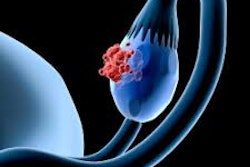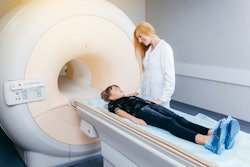MRI illuminates the structural and functional organization of the brain -- thus helping clinicians predict the progression of Parkinson's disease in patients in its early stages, researchers have found.
A team led by Silvia Basaia, PhD, of the IRCCS San Raffaele Scientific Institute in Milan, Italy, reported that Parkinson's "disease exposure" at one and two years correlated with white matter atrophy at two years and three years after baseline imaging. The results were published June 25 in Radiology.
"[Our study found that the] brain connectome, both structural and functional, showed the potential to predict progression of gray matter alteration in patients with mild Parkinson's disease," said co-author Federica Agosta, MD, PhD, also of the institute, in a statement released by the RSNA.
Parkinson's disease can manifest as tremors, slowness of movement, or rigidity, and its symptoms worsen over time, according to the RSNA. Basaia's group explored whether a "connectome map" of structural and functional brain connections could predict Parkinson's disease progression via a study that included 86 patients with mild disease (mean age, 60 years) and 60 healthy controls (mean age, 62 years). All participants underwent 3D T1-weighted brain MR imaging; the team assessed the extent of regional gray matter atrophy at baseline and every year for three years.
The investigators constructed the connectome map using diffusion tensor imaging (DTI) and resting-state functional MRI (fMRI) data from the study's healthy controls. They defined disease exposure indexes -- that is, directories of the pathology of each brain region -- by evaluating the structural or functional connectivity of all the connected regions in the healthy connectome and the severity of atrophy of the connected regions in participants with Parkinson's. Finally, the authors assessed any correlations between structural and functional disease exposure indexes of each gray matter region at one- or two-year follow-up and atrophy progression at two- or three-year follow-up.
They found the following:
- Disease exposure indexes at one and two years correlated with atrophy at two and three years (p-value range, 0.002 to 0.04).
- Disease exposure indexes predicted gray matter atrophy accumulation over three years in the right caudate nucleus and some frontal, parietal, and temporal brain regions (p < 0.001).
The results reinforce the theory that "functional and structural connections between brain regions may significantly contribute to Parkinson's disease progression," and underscore MRI's role in research regarding preventing or delaying the progression of the disease, Agosta noted.
"The idea that this approach could help identify different biomarkers capable of modulating Parkinson's disease progression inspires our work," she said.
The findings "support the concept of staged progression of Parkinson's disease," wrote Kei Yamada, MD, PhD, of Kyoto Prefectural University of Medicine in Japan in an accompanying commentary.
"[I] have no doubt that imaging studies will continue to play a pivotal role in investigating the pathophysiology of Parkinson's disease," he concluded.
The complete study can be found here.




















